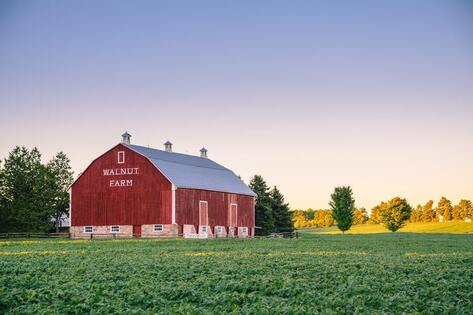
The Most Popular Horse Breeds Of 2019
Equestrian Advice & Guides General Equestrian
Build your business profile for FREE and expose your services to thousands of potential clients!
Create my profile now!
If your building a new barn of any kind, or you want to improve on your existing building, you need to decide on your floor type. What your using your building for will effect your decision, as well as your budget. Most ranchers build pole barns, so you could just use the natural soil that is common in your area, or you might need to modify that based on your uses. If your storing equipment in your barn, you can use soil, or a base of gravel. But if you are keeping livestock, especially horses in your barn, there are more things to consider.
Your horses leg health needs to be considered if they will be standing for long periods of time in a stall. The second thing is the general care and maintenance of the floor. You may want one type of floor for the aisles and another for stalls. There are several categories of flooring based upon your budget, material availability, and usage.
Soil floors can be made of sand, red clay, or native soil. Red clay is best used over a gravel base to make sure you have good drainage. Native soil is a good choice but horses may paw and dig holes in it. Sand is a common flooring for stalls because it is low maintenance, and it’s easy to keep dry. The bedding needs are also greatly reduced, you just have to make sure they are not eating it or you could get sand colic.
Wood used to be a common choice for flooring but you needed to use treated wood. It is low upkeep but you may have urine odor. Horses can paw at it and cause damage, but it’s a good option if it has a base of gravel under it. It has become less popular today because the cost of wood has gone up.
Concrete is a common flooring in barns and stalls. It is durable, easy to clean, and hard to destroy. Textured concrete is used in aisles and stalls to give better traction when surfaces get wet. Some animals think concrete is cold and damp, and they won’t lay down unless there is bedding or rubber stall mats. Stall mats are recommended for horses to keep their legs healthy.
Crushed limestone or lime sand is a great floor for stalls. It is low maintenance if installed properly and packed down. Watering it down to pack it is very useful. It is very durable and has good traction for your horses feet. Over time it can become hard like concrete, so bedding and/or stall mats may be required.
Interlocking Bricks are a great option to provide a solid surface, but they are hard to clean, and may require bedding or mats over them. They may be too expensive depending on your area.
Grid floors made of rubber or plastic are a great choice. They are put down over sand or crushed limestone. They have great drainage and are low maintenance.
Asphalt is another option that most people haven’t considered. It is easy on the horses legs, and has wonderful drainage. The important thing is it has to be thick enough to not crack. It is very low maintenance, and is less expensive than other options.
So as you see there are many great options for your barn flooring depending on your use, location, and your budget. You just need to consider what factors are the most important to you. A rancher’s barn floor is going to be different from a veterinarian’s, and a boarding facilities different from theirs. I hope you found this article helpful in planning your barns flooring.

